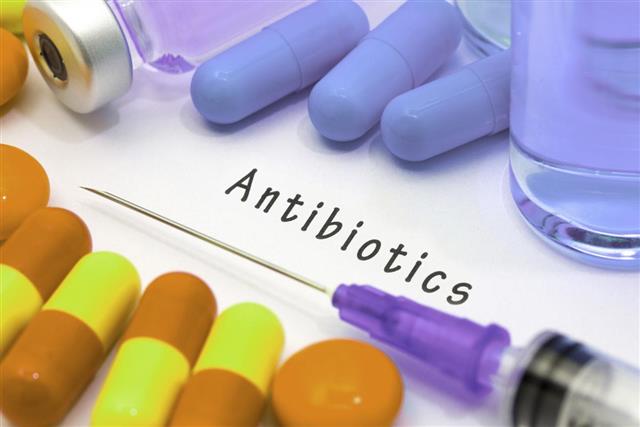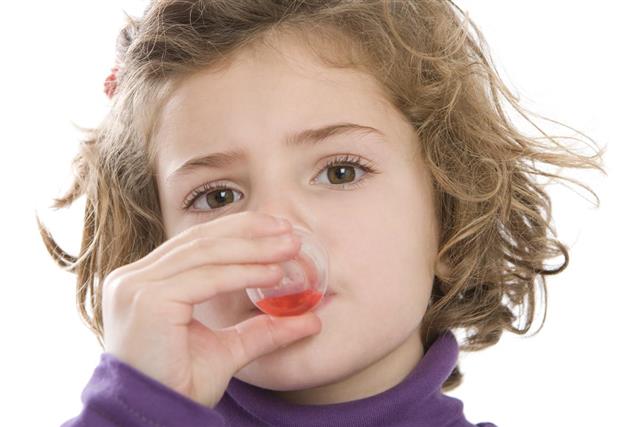
Amoxicillin, though a very commonly used drug to treat bacterial infections, has certain side effects which every person (who is prescribed this drug) should be aware of. However, not everyone who takes this medicine will suffer from its adverse effects. Elucidated below are the serious and less serious fallouts of this drug.
Recent Revelation
According to a recent study done by researchers from the University of Iowa, it has been reported that amoxicillin use during infancy supposedly leads to a defective tooth enamel in permanent teeth. Although this is a strong claim, research is still underway in this regard.
Amoxicillin belongs to the spectrum of beta-lactam antibiotics, and is the drug of choice when it comes to treating bacterial infections, as it is well-absorbed even when given orally. Hence, it is used to treat a variety of infections, including infections of the ear, nose, and throat, skin infections, urinary tract infections, lower respiratory tract infections, gonorrhea and other sexually transmitted infections. Amoxicillin for treatment of sinus infection is also a very well-known use of this drug. Thus, its multipurpose use makes this drug a very popular one among medical practitioners. However, the side effects are something that doctors need to be well-aware of, so as to prevent them from occurring, as they can be life-threatening at times.
Serious Fallouts
▶ Anaphylactic Reaction
One of the most serious and dangerous of all side effects is anaphylactic reaction. This reaction is defined as a life-threatening type 1 hypersensitivity reaction to a drug which is given internally or orally. Around 1500 patients die yearly due to an anaphylactic reaction in the United States. However, this serious allergic response of the body only occurs in those patients who are sensitive to penicillin and its derivatives, as opposed to people who present with pseudoanaphylaxis or an anaphylactoid reaction. This reaction is characterized by the following signs and symptoms:
- Dermatologic side effects are one of the first signs of hypersensitivity that are visible. Normally, a true anaphylactic reaction with systemic signs and symptoms begin showing within 72 hours of exposure to the allergen, without the need of further exposure. This includes generalized hives, skin rashes, itchiness, and flushing. Fever is often experienced by people, along with the skin rashes.
- Swelling of lips, tongue and/or throat is also seen, as this is the body’s way of fighting the inflammation.
- Respiratory distress, in the form of difficulty in breathing, shortness of breath, wheezing, etc., may also be seen.
- Some patients may also complain of gastrointestinal problems like severe abdominal cramps, stomach pain, diarrhea (watery or bloody), etc.
- Other serious effects that may occur, if immediate action is not taken to deal with the symptoms, include coronary artery spasms, which may lead to myocardial infarction. Consequently, there may also be a sudden drop in blood pressure, which may lead to lightheadedness and fatigue, along with loss of consciousness.
Other Side Effects
▶ Oral Thrush
Oral thrush is often seen as a superinfection in case of overdose of amoxicillin. Whenever there is an overdose of antibiotic consumption, there is often an adverse reaction due to impairment with the immunity. This leads to increased susceptibility to other opportunistic infections like oral thrush or candidiasis and other fungal infections of other organs.
▶ Gastrointestinal Distress
One of the side effects observed in infants is digestive distress. When the body is not used to the intake of amoxicillin, the digestive tract often acts adversely, leading to abdominal cramps, stomach cramps, pain in lower abdomen, etc. These symptoms may even mimic irritable bowel syndrome.
▶ Nausea
Frequent nausea and vomiting are one of the other common side effects noticed in women due to amoxicillin. These are normally very mild and rarely life-threatening. There may also be diarrhea along with nausea and vomiting.
▶ Liver Damage
Another serious side effect, which only occurs after long-term use and abuse of the drug is liver damage. Hepatotoxicity is a very unfortunate side effect of this drug, especially when the drug is a combination of amoxicillin and clavulanic acid. This mostly occurs due to hepatocellular injury and inability of the bile to flow from the liver (cholestasis). Other liver damage signs include yellowing of skin and eyes, dark (yellow-colored) urine, and upper right abdominal pain.
Uncommon Signs
• Seizures
• Unusual bleeding or bruising
• Pale skin
• Excessive tiredness
• Lack of energy
Preventive Measures
- Taking a detailed history of the patient before prescribing amoxicillin to any patient is of paramount importance. Most patients who get an allergic reaction to this drug are aware of their tendency to develop them. Hence, taking a detailed case history is the first and foremost way of preventing side effects from occurring in toddlers and adults.
- For most patients who need to be administered amoxicillin, especially if it is to be given intravenously, it is best to do a patch test before to check for any possible allergic reaction. This is because, giving amoxicillin to a person who is sensitive to it can lead to a very quick and potentially fatal anaphylactic reaction.
- Cases of people who are even suspected to be allergic to amoxicillin should preferably be given other non-penicillin derivative antibiotics to prevent any allergic reaction to antibiotics.
Amoxicillin, being the wonder drug that it is, is a huge temptation for doctors, as it encompasses treatment for a range of diseases. However, if the patient gives a history of or even a slight hint of a tendency towards being allergic to amoxicillin, then it is best to avoid giving this drug, so as to completely do away with the possibility of side effects.
Disclaimer: This HealthHearty article is for informative purposes only, and should not be used as a substitute for professional medical advice.




